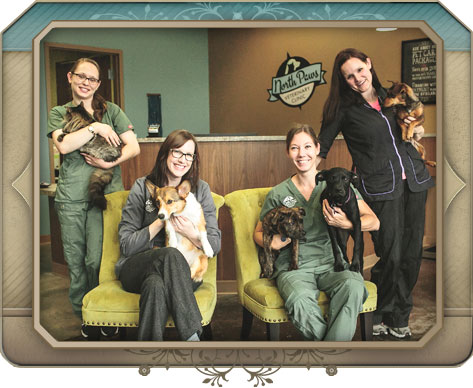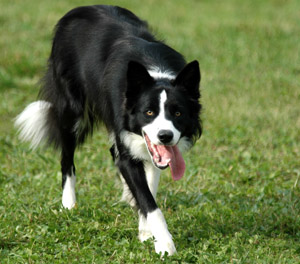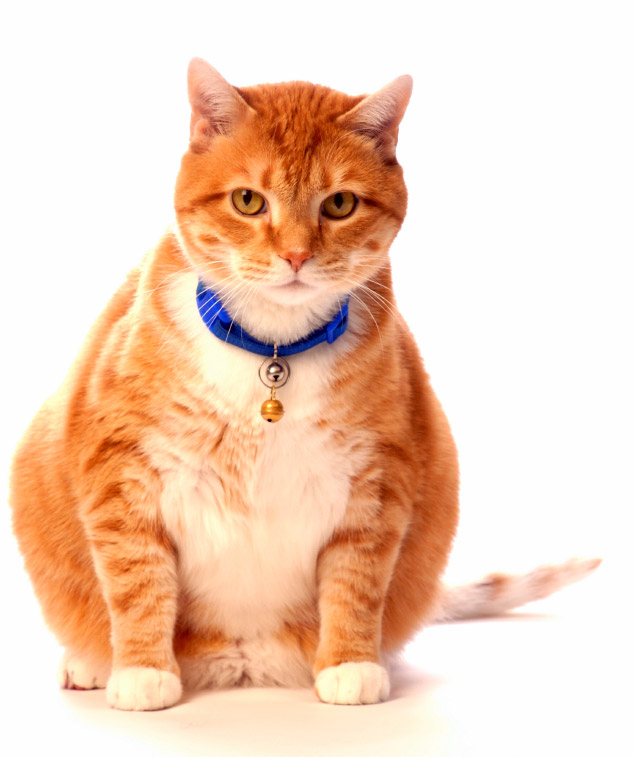North Paws Newsletter

Introduction
The veterinarians and staff at North Paws Veterinary Clinic are pleased to provide you with an online newsletter of pet-related articles and news stories.
This fun and fact-filled newsletter is updated on a regular basis.
Included in the newsletter are articles pertaining to pet care, information on our animal hospital, as well as news on the latest trends and discoveries in veterinary medicine. Get started by browsing the Current Newsletter Topics links that pertain to each article.
Please enjoy the newsletter!
March 23 is National Puppy Day! Since 2006, National Puppy Day celebrates the magic and unconditional love that puppies bring to our lives. Over the years, this holiday has grown into an international holiday, and has trended on Twitter since 2012.
Creator Colleen Page—who also founded National Dog Day and National Cat Day—created this event to help save orphaned puppies across the globe while educating the public about the horrors of puppy mills. According to the National Puppy Day website, there are approximately 8,000-10,000 puppy mills in the U.S. , including many businesses that call themselves breeders that purposely allow their dog to get pregnant in hopes of selling puppies through local papers or online.

“The tragedy of puppy mills is that they don’t care about the animals more than a commodity to be sold,” National Puppy Day’s website reads. “Most of these animals live in crammed cages with no room to movie, in complete and utter squalor.”
While National Puppy Day is a great day to post pictures of your adorable puppy to your Twitter feed, don’t forget why we celebrate this holiday: for the fair and ethical treatment of dogs across the world. To learn more about National Puppy Day and why adopting a puppy is important, visit http://www.nationalpuppyday.com/
Flying may not be the ideal way to travel with your pet, but sometimes there are no other options. In fact, over two million pets and other live animals travel by air every year in the United State. Unfortunately, it can be difficult to know what the policies are regarding pet air travel as they vary from airline to airline. Furthermore, states in the U.S. and national governments impose different restrictions. Whether you're flying coast-to-coast, cross-Atlantic, or half-way across the world, there will be specific guidelines to follow before you take to the skies.
Here are a few standard regulations that are helpful to know if you’re considering flying with your pet. If you have more questions, contact your airline directly. Most times, the specific policies and procedures are listed on the airline’s website, or you can call the airline’s reservations line and speak with an agent.

Pets in the Passenger Cabin
Policies regarding animals in passenger cabin vary from airline to airline with one exception – service animals. Since service animals are not considered pets and are needed to aid those with disabilities, they are always allowed to stay in the passenger cabin. Service animals do not require health certificates to travel, nor do they need to be in a container or cage.
The Federal Aviation Administration (FAA) allows each airline to enforce its own individual policy regarding pets in the passenger cabin, but the FAA requires:
- The pet container must be small enough to fit underneath the seat without blocking any person’s path to the main aisle of the airplane.
- Your pet container must be stored properly before the last passenger entry door is closed so the airplane can leave the gate.
- The pet container must remain properly stowed the entire time the plane is moving on the tar mac, as well as during take off and landing.
Despite differing procedures, there are a number of general policies you’ll encounter that allow for all passengers to have a comfortable flight. Some of these policies may include:
- Restrictions on the different types of animals allowed aboard
- A limit on the number of pets allowed in the cabin
- A requirement that your pet is harmless to fellow passengers, including inoffensive and odorless
- A requirement that you be able to produce a recent health certificate for your pet

Tips for Safe Air Travel with Your Pet
As a pet owner, you are responsible for the welfare of your animal while traveling. In addition to federal regulations and airline policies, here are a few things you can do to help make traveling with your pet easier and safer:
- Before traveling, it’s best to help your pet get accustomed to its kennel. Also make sure that the door latches securely.
- Don’t feed your pet solid food at least six hours before the flight. A moderate amount of water and a walk before and after a flight are strongly advised.
- Ask your veterinarian if it would be best for your pet to be tranquilized for the trip. It’s also a good idea to try a test dose before travelling to gauge how your pet will react.
- Health certificates must be issued 10 days before travel. Rabies and vaccinations certificates are also required.
- Reserve a space for your pet in advance with the airline. Also ask about the time and location for drop-off and pick-up for your pet. Because of restrictions on the number of animals permitted, reservations are accepted on a first-come, first-served basis.
- Ideally, try to book a non-stop flight. This will help reduce stress and worry for you and your pet. If possible, avoid connections or traveling during the weekend or holidays.
- For overseas travel, ask about any health requirements including policies pertaining to quarantine.
- Be sure to write your name, address and phone number on your pet's carrier, and make sure your pet is wearing a tag with the same information. A temporary tag that shows your destination address and phone number is also a good idea, as is bringing a picture of your pet in case it becomes lost.
When cats play, they incorporate a variety of behaviors into their play. Aggressive play behavior is particularly common in young cats and in cats that live in one-cat households. Play provides young cats with opportunities to practice skills they would normally need for survival such as pouncing, stalking, biting, scratching and clawing. If humans play with a young kitten using their hands and/or feet instead of toys, the kitten is liable to learn that practicing these skills while playing with people is okay. In most cases, it is possible to teach your kitten or young adult cat that rough play is not acceptable behavior.
Since young cats and kittens need a lot of playtime, it is important to set up three or four consistent times during the day to initiate play with your cat. This helps her understand that she is not the one responsible for initiating play. This also helps to avoid unwanted pouncing at inappropriate or inconvenient times.

One way kittens play is by grabbing each other with both front feet, biting each other and kicking with their back feet. This is also a way kittens try to play with hands and feet if being waved in front of them. It is very important to avoid using any part of your body, like fingers or toes. Redirect your cat's aggressive play behavior onto acceptable objects like toys. It may take some trial and error to find the toy that works best with your kitten so make sure you try a variety.
Often, discouraging unacceptable behavior is the only avenue that is available. You need to set the rules for your kitten's behavior and your family and friends should reinforce these rules. Your kitten can't be expected to learn to differentiate between people in terms of when it's okay for rough play and when it is not.
• Use aversion techniques to discourage your kitten from nipping or biting- You can either use a squirt bottle filled with water or a can of pressurized air to squirt your kitten when she becomes rough. To use this technique effectively, you always need to have the spray bottle or can of air handy. Remember that aversion techniques only works if you offer your kitten an acceptable alternative.
• Redirect the behavior- After you startle your kitten with the air or water, IMMEDIATELY offer her a toy to wrestle with or to chase. This will encourage her to direct her rough play onto a toy instead of a person. It is recommended that you keep a stash of toys hidden in each room specifically for this purpose.
• Withdraw attention when your kitten starts to play too rough- If the distraction and redirection techniques don't seem to be working, the most drastic thing you can do to discourage your cat from rough play is to withdraw all attention. Since she wants to play with you, she is going to figure out how far she can go; however, you keep this limit consistent. The best way to withdraw your attention is to walk into another room and close the door long enough for her to calm down. If you pick her up to put her in another room, you're rewarding her by touching her. You should be the one to leave the room.
If you find that none of these suggestions work and your kitten's play increases in aggression or becomes unpredictable, it can be best to seek help from a behavior specialist. Kittens can bite or scratch through the skin, and abuse by your cat is not conducive to a caring and mutually beneficial relationship.
Your dog always seems to know the difference between a ride to the dog park and a ride to the veterinarian's and understands dozens of different commands (though not necessarily always when you want him or her to do so), but just how smart is your pooch? According to a Canadian professor, your furry friend is just as smart as a 2-year-old child.
Dogs have the same developmental abilities "equivalent to a human 2-year-old," said Stanley Coren, a professor emeritus of psychology at the University of British Columbia and the author of "How to Speak Dog" and "How Dogs Think," as well as a number of other books. Coren presented his findings earlier this month at the annual meeting of the American Psychological Association in Toronto.
According to Coren, the average dog can learn to understand about 165 words and can count up to four or five. Dogs can also experience fear, anger and happiness, but do not feel guilt - characteristics similar to a human toddler, Coren said. They can be sneaky, too: Coren said that dogs are capable of intentionally deceiving other dogs and people in order to get treats they want.

While all dogs can learn new tricks, not all dogs are created equal, according to Coren. Using data from more than 200 dog obedience judges in the United States and Canada, Coren ranked a number of dog breeds based on their intelligence. The Border Collie sits at the top of the list, followed closely by Poodles, German Shepherds, Golden Retrievers and Dobermans. The Afghan Hound is ranked at the bottom of the list of 100 breeds.
In his blog, Coren writes that dogs possess different varieties of intelligence. Instinctive intelligence refers to the skills dogs were bred for (herding dogs, etc.); adaptive intelligence is a measure of what a dog can learn to do for him or herself, and working and obedience intelligence covers skills learned by "working dogs" such as police dogs or guide dogs.
But Coren is quick to note that intelligence isn't always an indicator of personality and that the smarter the dog, the greater the chance for mischief: "While a smart dog will learn everything that you want it to know, it will also learn everything that it can get away with," Coren writes. More importantly, intelligence has no bearing on a dog's companionship; your dog's breed may not be at the top of the smartest-breeds list, but that doesn't make his or her friendship any less valuable.
Obesity is the most common nutritional problem of cats. Since most cats are relatively inactive, it is not surprising that up to 40 percent of all cats seen by veterinarians are overweight. Obesity puts a considerable number of cats at risk for associated diseases such as lameness, feline urologic syndrome, diabetes mellitus, skin problems and cardiac disease. Due to the amount of fat that is present in the body of an overweight cat, X-rays are sometimes difficult to assess and surgical procedures can be difficult to dangerous.

It is tempting to tiptoe around the issue of feline weight reduction. One reason is lack of client acceptance of the problem. The realization of owning an obese cat can sometimes prove awkward if the owner is also markedly overweight. More important to remember, however, is that although the "lose weight fast" mantra is appealing to humans, it can be deadly for cats. Rapid weight loss in cats is associated with hepatic lipidosis (fatty liver disease), most commonly seen in obese, spayed female cats undergoing a short-term "crash" diet.
Traditional high-fiber (up to 25 percent) weight-loss diets can also cause problems, such as excessive stool output, poor skin and coat condition and decreased nutrient digestibility and absorption. Weight loss can be achieved safely, however, with a low-fiber, low-calorie diet. Research has found that a cat can lose an average of 1.5 percent of their body weight per week over a 16-week period with no adverse effects. Ultimately, it is important to work with your veterinarian in order to find a diet that your cat likes, as well as having the ability to help your cat lose weight safely.
Another weight loss tool on the horizon is L-carnitine. Obtained from diet or synthesized by the body, L-carnitine facilitates "fat-burning" and is already used in humans. Following studies, it has been concluded that a lipid solution of supplemental L-carnitine accelerates weight loss and may increase the rate of fatty acid oxidation in cats. It has been cautioned, however, that this effect requires further investigation. As with human diets, there is no magic feline diet pill.
Before embarking on a feline weight loss program, it is important to have your veterinarian assess your cat's body condition, current health condition and medical history. Weight reduction in cats is a tough problem. Research confirms that cats can lose weight safely with the proper diet, but with so many foods to choose from, it can be difficult to go it alone. Use both the advice from your veterinarian and the choice of your cat (if he won't eat it, then it might not be such a good choice) to determine the right food. Just remember: as cats lose weight on a well balanced portion, they become more active and playful and have a healthier appearance. This is a win-win situation!